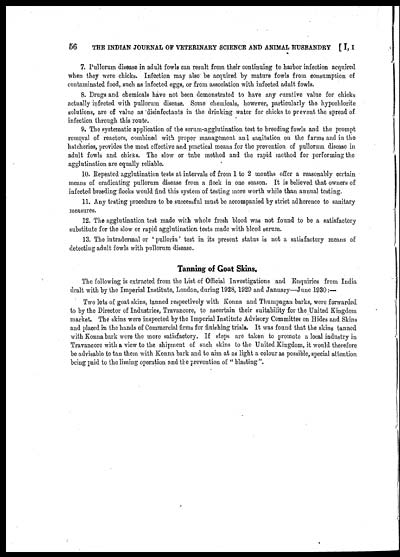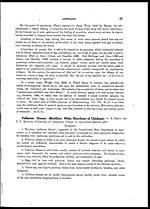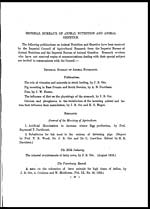Medicine - Veterinary > Veterinary colleges and laboratories > Indian journal of veterinary science and animal husbandry > Volume 1, 1931 > Part I (March 1931) > Abstracts
(90) Page 56
Download files
Individual page:
Thumbnail gallery: Grid view | List view

56 THE INDIAN JOURNAL OF VETERINARY SCIENCE AND ANIMAL HUSBANDRY [I, I
7. Pullorum disease in adult fowls can result from their continuing to harbor infection acquired
when they were chicks. Infection may also be acquired by mature fowls from consumption of
contaminated food, such as infected eggs, or from association with infected adult fowls.
8. Drugs and chemicals have not been demonstrated to have any curative value for chicks
actually infected with pullorum disease. Some chemicals, however, particularly the hypochlorite
solutions, are of value as disinfectants in the drinking water for chicks to prevent the spread of
infection through this route.
9. The systematic application of the serum-agglutination test to breeding fowls and the prompt
removal of reactors, combined with proper management and sanitation on the farms and in the
hatcheries, provides the most effective and practical means for the prevention of pullorum disease in
adult fowls and chicks. The slow or tube method and the rapid method for performing the
agglutination are equally reliable.
10. Repeated agglutination tests at intervals of from 1 to 2 months offer a reasonably certain
means of eradicating pullorum disease from a flock in one season. It is believed that owners of
infected breeding flocks would find this system of testing more worth while than annual testing.
11. Any testing procedure to be successful must be accompanied by strict adherence to sanitary
measures.
12. The agglutination test made with whole fresh blood was not found to be a satisfactory
substitute for the slow or rapid agglutination tests made with blood serum.
13. The intradermal or 'pullorin' test in its present status is not a satisfactory means of
detecting adult fowls with pullorum disease.
Tanning of Goat Skins.
The following is extracted from the List of Official Investigations and Enquiries from India
dealt with by the Imperial Institute, London, during 1928, 1929 and January—June 1930 :—
Two lots of goat skins, tanned respectively with Konna and Thumpagan barks, were forwarded
to by the Director of Industries, Travancore, to ascertain their suitability for the United Kingdom
market. The skins were inspected by the Imperial Institute Advisory Committee on Hides and Skins
and placed in the hands of Commercial firms for finishing trials. It was found that the skins tanned
with Konna bark were the more satisfactory. If steps are taken to promote a local industry in
Travancore with a view to the shipment of such skins to the United Kingdom, it would therefore
be advisable to tan them with Konna bark and to aim at as light a colour as possible, special attention
being paid to the liming operation and the prevention of " blasting ".
Set display mode to: Large image | Zoom image | Transcription
Images and transcriptions on this page, including medium image downloads, may be used under the Creative Commons Attribution 4.0 International Licence unless otherwise stated. ![]()
| Permanent URL | https://digital.nls.uk/75226064 |
|---|
| Description | Covers articles from 1931. |
|---|




